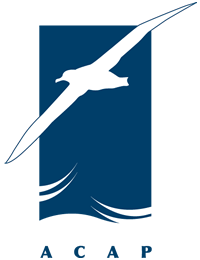Two days of workshops were hosted by BirdLife International over 18-19 October 2011 in Alghero, Sardinia to develop population assessments for Cory's Calonectris diomedea and Yelkouan Puffinus yelkouan Shearwaters. The workshop followed immediately after the 13th MEDMARAVIS Pan-Mediterranean Symposium.

Attendees at the Sardinian shearwater workshop
Photograph by Ivan Ramirez
Cory's Shearwater and Yelkouan Shearwater have been identified as having an unfavourable conservation status in Europe as they are listed in Annex I of the European Commission's Birds Directive and are suffering declines due to incidental fishing bycatch and introduced invasive species, and to a lesser extent light pollution, human disturbance, illegal hunting, oil spills and potentially wind farms. A population assessment for each species is required before Action Plans are produced/ updated, particularly as the current size and trend of many national populations is unclear.
Experts and BirdLife partners from over nine countries came together to discuss the latest data on the species' population size, trends and threats to elaborate a common expert assessment of the population status and identify key knowledge gaps and research needed. The information obtained through the workshops and the review process has enabled BirdLife to assess the population status of the two species with more confidence and provides baseline data for future species action plans.
The assessment estimated the current global population size of Yelkouan Shearwater as 15 300-30 500 pairs/ 46 000-92 000 individuals; and Cory's Shearwater as c. 392 280-473 990 pairs/ 1 000 000-1 500 000 individuals (142 480-222 890 pairs for C. d. diomedea; and 251 100-251 300 pairs for C. d. borealis), almost double the previous estimate of 200 000 pairs.
The results also have implications for the Red List status of the Yelkouan Shearwater because the population assessment revealed that the breeding population was decreasing at a rate of >30% over three generations (54 years), which is a steeper decline than previously estimated. There is also evidence of recent and historical colony extinctions, with nine colonies having been reported extinct in the last 60 years. Low adult survival has also been reported, with adult survival probabilities for breeding Yelkouan Shearwaters across the western Mediterranean currently being projected as too low to maintain stable populations. This suggests that the species' global status ought to be revised from its current status as Near Threatened to Vulnerable (click here to view the entry proposing the changed listing for this species and requesting comments on BirdLife's Globally Threatened Bird Forums).
Yelkouan Shearwater. Photograph by Matthew Borg Cardona
The results from the population assessments will be used in setting conservation action priorities for both species, supporting and informing policy work, and will aid in the identification of marine Important Bird Areas (mIBAs) and the potential inclusion of the species in maritime agreements and biodiversity protocols.
The three shearwater species that breed within the Mediterranean have all been identified as potential candidates for listing within the Agreement. The third species is the Critically Endangered Balearic Shearwater Puffinus mauretanicus that is likely to be listed by ACAP later this year (click here).
For an earlier news item on the Yelkouan Shearwater click here.
Reference:
Oppel, S., Raine, A.F., Borg, J.J., Raine, H., Bonnaud, E., Bourgeois, K. & Breton, A.R. 2011. Is the Yelkouan shearwater Puffinus yelkouan threatened by low adult survival probabilities? Biological Conservation 144: 2255-2263.
With thanks to Mia Derhé, European Conservation and Research Officer, BirdLife International (
John Cooper, ACAP Information Officer, 11 January 2012

 Español
Español  English
English  Français
Français 